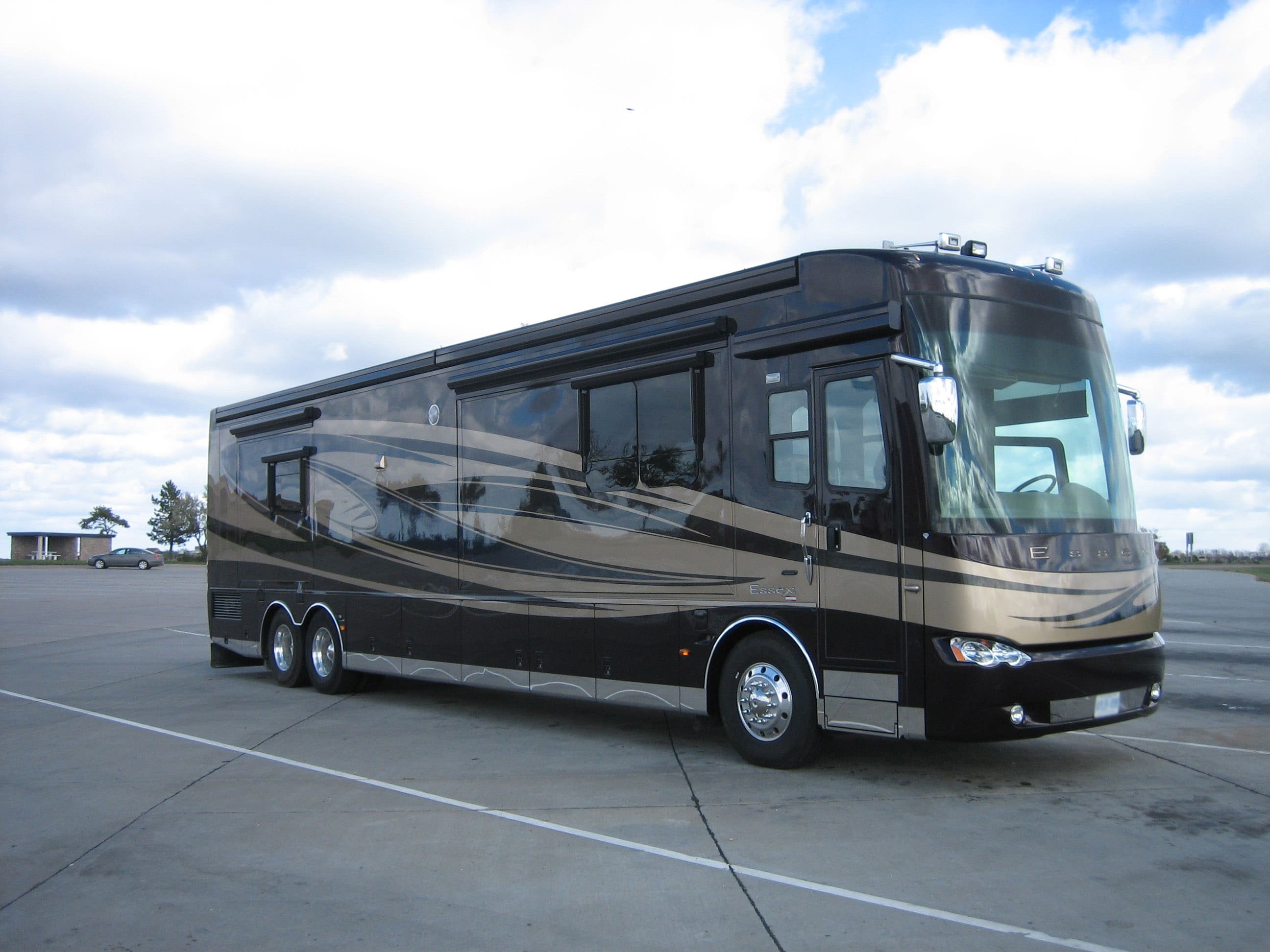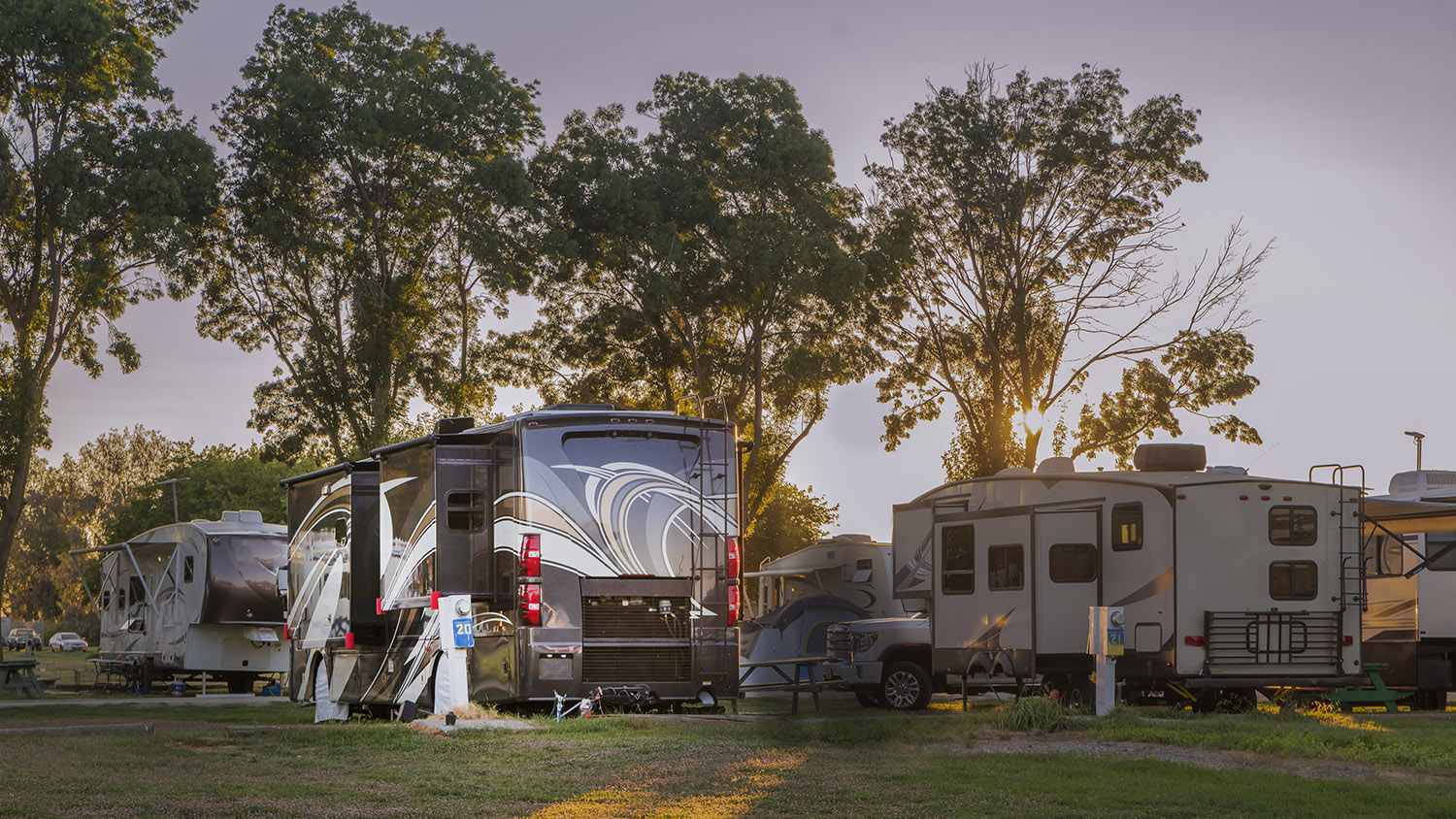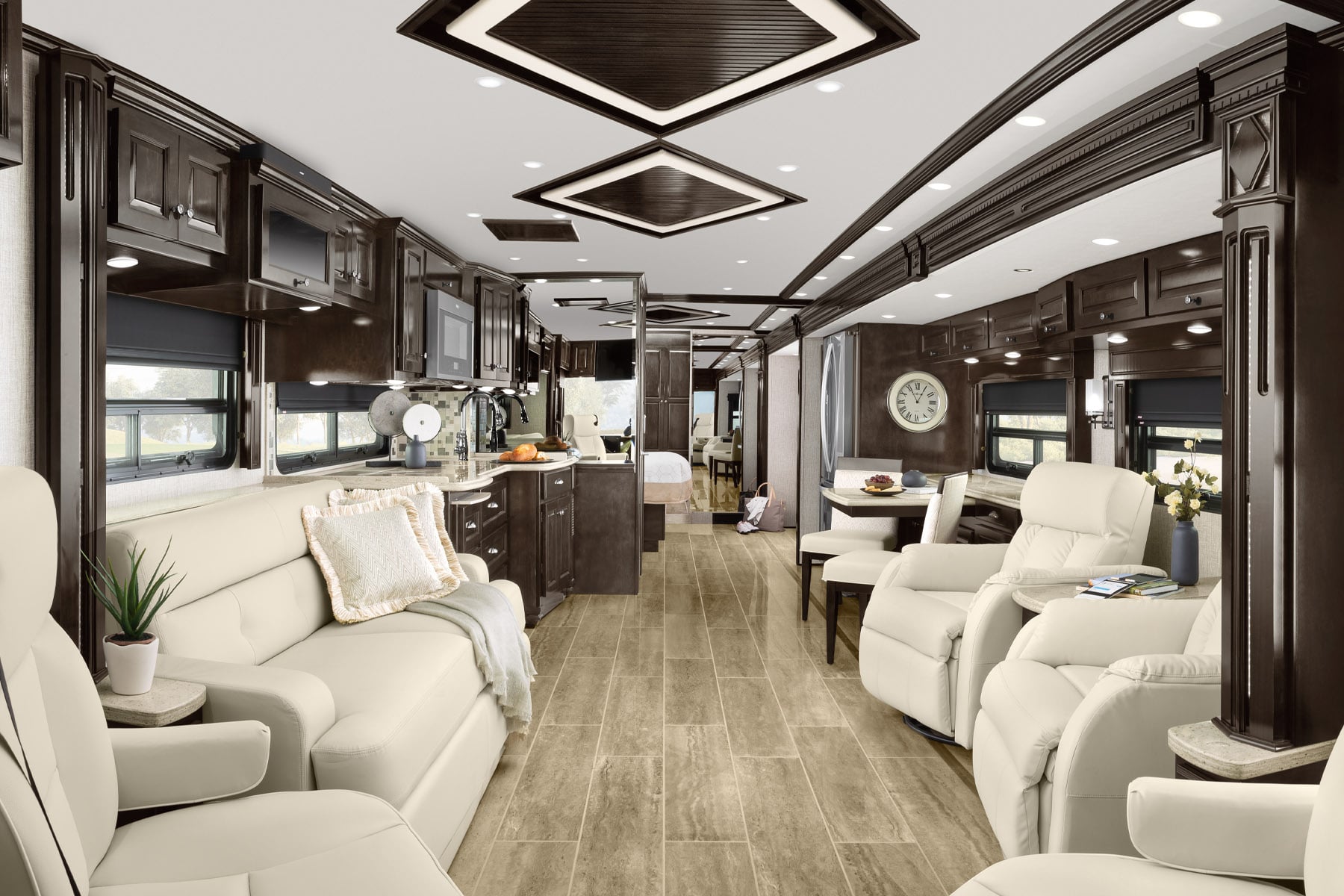WEnRV travel news, products, and industry trends
Key Differences Between Diesel- and Gas-Powered Motorhomes
For many RV travelers, a new year brings dreams of buying a new vehicle. And folks who are in the market for a Class A motorhome must decide between two types: diesel pushers and gas-powered vehicles.
The diesel RV features an engine mounted at the rear of the vehicle (hence the term, “pusher”). Gas-powered vehicles are powered by engines more conventionally placed in the front. Gas-powered Class A coaches are limited in overall length of about 38 feet while diesel pushers are made up to 45 feet.

Diesel pusher motorhome. Photo: Peter Mercer
For many new to Class A motorhome travel, one question often comes up: Why are diesel motorhomes so much more costly than their gas-powered cousins? Indeed, the difference is quite dramatic: Pusher prices can exceed their gas-powered counterparts by $100,000 and more. How can you justify such a huge gap? After all, a combustion engine burning diesel fuel cannot cost that much more than a gas unit, right?
Well, the engine difference is not the only big-dollar item here. The fact is, they are totally different vehicles.
Explaining the Difference
To start with, diesel power plants aren’t manufactured in the same numbers as mass-produced automotive industry motors. They are built much heavier to withstand the greater compression combustion and high-torque output. And unlike RV gas engines, diesel vehicles are equipped with turbochargers, air-intake-charge coolers and regulated air compressors built-in. The crankshaft torque of a diesel engine dwarfs that of the gas-powered motor.

Diesel pusher motorhome in RV resort. Getty Images
This high torque requires a much stronger vehicle transmission, computer-controlled torque management, heavier engine mounting and substantially stronger driveline components. It needs a higher-capacity rear-end differential and a much heavier custom-built chassis. The increase in the chassis weight and structural strength requires upgrading the braking package to handle the much higher weight. Today’s diesel pushers are equipped with air brakes and many now employ air-disc type. Full air suspension with self-leveling servos are employed to provide a smooth ride. The diesel pusher, conforming to the fuel onboard, also utilizes a diesel generator which is both heavier and more costly.
Rear-engine-mounted diesels require specially designed cooling packages, some of which are quite complex. Radiator stacks have to deal with engine coolant, air intake cooling, oil cooling and transmission fluid temperature regulation.
Another Way to Look at It
In some ways, we should not think that diesel coaches are more expensive than gas. Instead, it could be said that gas-powered units are priced lower than diesels. This can be attributed to the fact that they use an already designed and mass-produced auto industry truck chassis. And that saves a lot of coin. On the other hand, many diesel-pusher chassis are niche market products that are not even close to being mass-produced.
When all is said and done, it is difficult to fully compare the two on paper. But what about firsthand experience? Generally, a diesel-pusher motorhome is equipped with far more high-line features and options. This is partially due to a much higher weight-carrying ability and the fact that these are designed for a target market. With the rear-mounted motor, the driver and forward seated passengers are isolated from the engine noise. This delivers a dramatic difference from that of the gas-powered front mount. The heavier overall vehicle weight and air suspension contribute to a smooth ride and reduced effect from crosswinds and traffic-related vortices. Steep grade descending is made easy with diesel engine brakes such as exhaust or Jake brakes.

Newmar Dutch Star diesel pusher interior. Photo: Newmar
While they are both motorhomes, they are in many ways quite different. It could be said that the diesel’s ability to deliver better fuel mileage than the gas rig is quite true. However, in an RV application, it might not be as thrifty as one would believe. Some of the diesel’s economic advantages are mitigated by the additional vehicle weight.
So, is the much higher price tag justifiable for a diesel pusher over a gas model? Perhaps so. I think each has its value based on what the buyer’s application is and their wants.
So consider this information if you’re thinking of purchasing a new motorhome in the coming year. Look for RV shows in your area, browse vehicles online or visit an RV dealer who sells the models that strike your interest.
Peter Mercer — The Money Sense of Gas and Diesel
The post Key Differences Between Diesel- and Gas-Powered Motorhomes appeared first on Good Sam Camping Blog.
Copyright
© Good Sam Camping Blog


